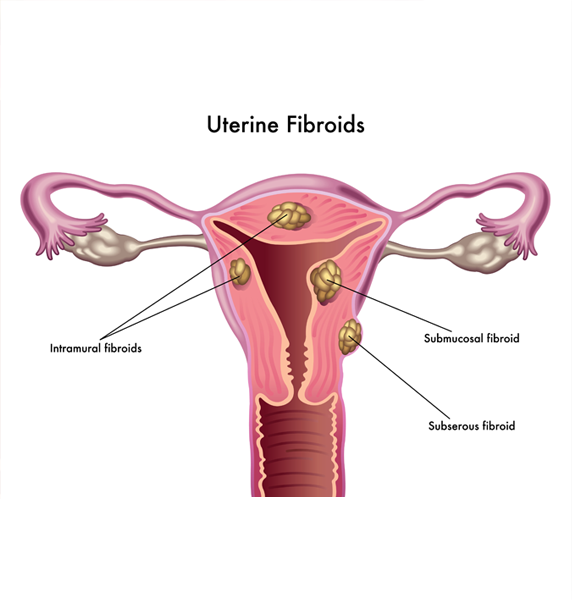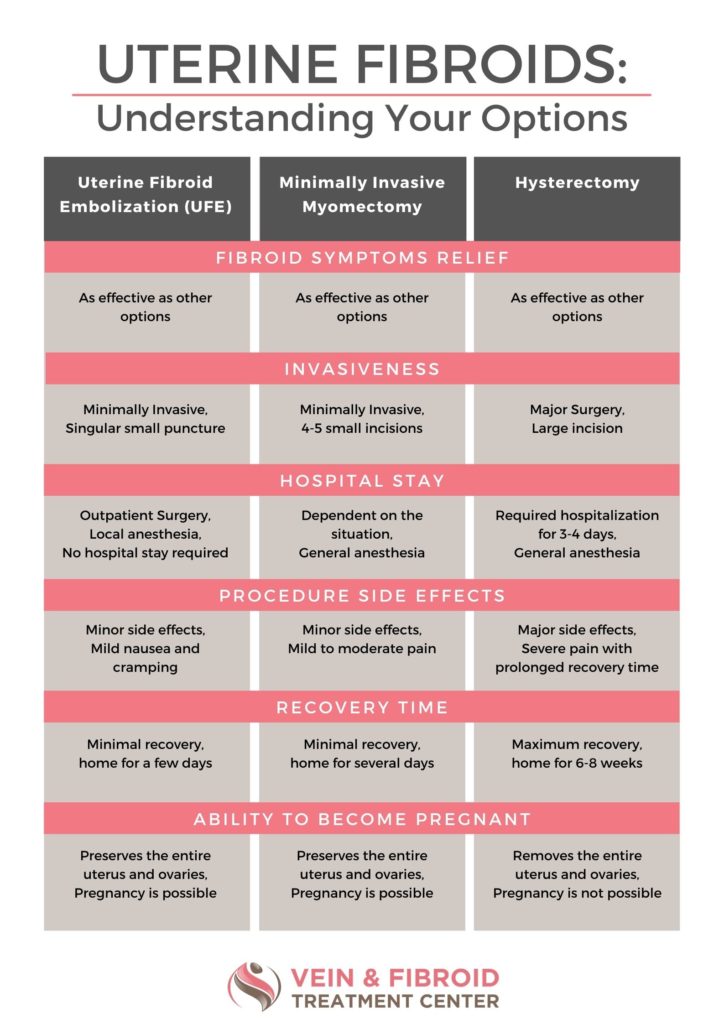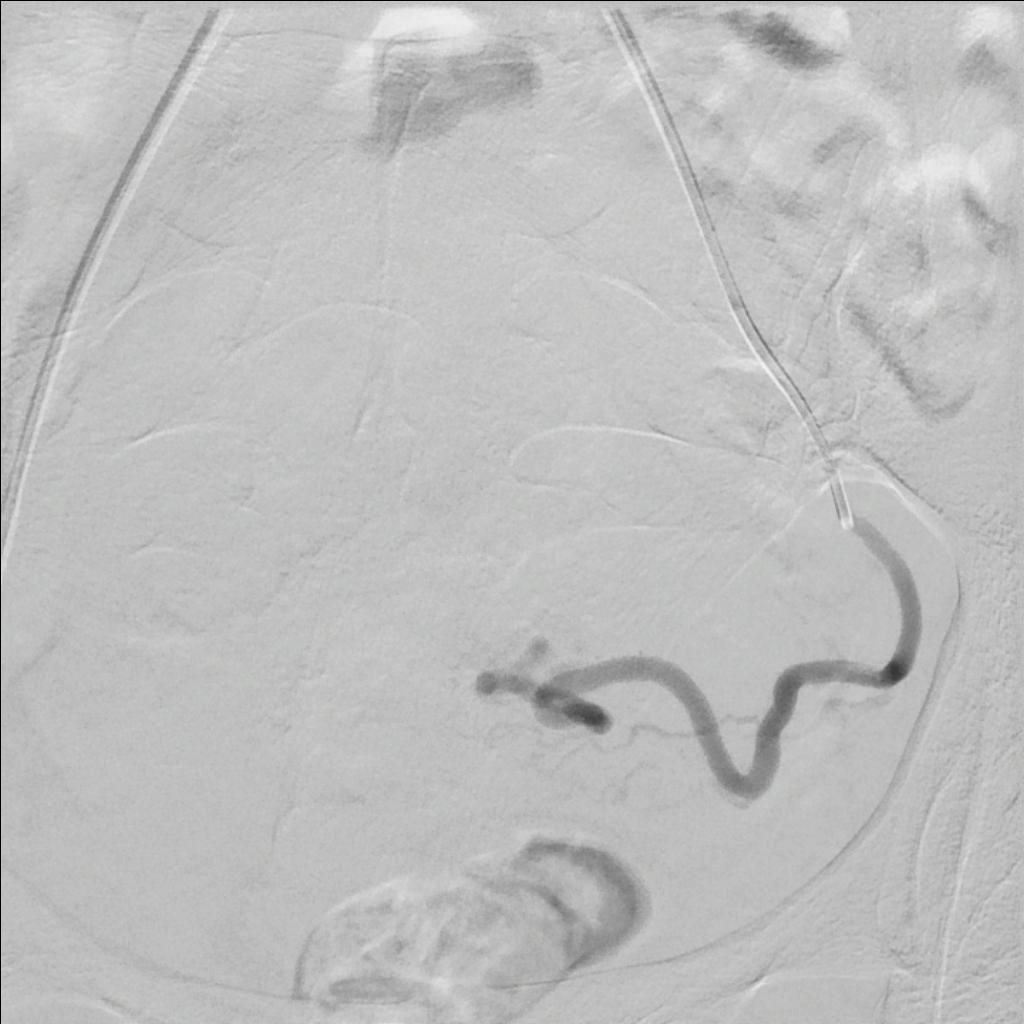
Uterine fibroids are a common benign tumor which can grow in the uterus and are many times asymptomatic. However, in some women, uterine fibroids can cause problems as debilitating pain and heavy irregular menstrual bleeding. Some women may present with pelvic pain , bloating and bulk symptoms. Patient may suffer urinary incontinence or urinary urgency as well as abnormal constipation related to the enlarged fibroid uterus pushing on the bladder or rectum.
Symptomatic uterine fibroids are treated with surgery such as hysterectomy where the uterus is removed. Patients may also get less invasive surgery such as myomectomy where the fibroids are surgically removed.
We offer a minimally invasive procedure called uterine artery embolization where we make a small pinhole in the artery either in the groin/hip or the wrist and using xray guidance to placed the catheter in the uterine artery providing blood supply to the fibroids. Once this is confirmed with xray, we inject tiny particles which will in essence cut off blood supply to the fibroids where they will shrink and no longer be viable. Patients will typically go home the same day and start to see resolution of their symptoms in a few weeks to a few months.
There are also women who have similar symptoms from a condition called adenomyosis where the inner lining of the uterus (endometrium) can invade the muscular wall of the uterus (myometrium). This condition can also cause pelvic pain, heavy menstrual bleeding and cramping and pelvic pressure symptoms. Uterine artery embolization may also serve as an alternative to hysterectomy.
Uterine artery embolization has been performed for over 20 years however it is not an option many women or physicians know about. We would be happy to offer a consultation to see if this is the right procedure for you.


This is an x-ray image of the catheter inside the uterine artery supplying the fibroids

This is an x-ray image after treatment of the fibroids. The blood supply to the fibroid is decreased which will kill and shrink the fibroids.



Patients with pelvic pain , abnormal uterine bleeding , and other symptoms may undergo testing and imaging do get a better diagnosis. For uterine fibroids we may order imaging such a pelvic ultrasound and abdomen/pelvis MRI . This will give us the tools to plan the embolization procedure.
For pelvic venous disease , we may order a CT abdomen pelvis with IV contrast to evaluate for pelvic varices , pelvic congestion syndrome or May Thurner syndrome .
For painful varicose veins, we may order a venous Doppler US to evaluate for venous reflux that may be treated with vein ablation, phlebectomy, and sclerotherapy.
For many patients with symptomatic fibroids , uterine artery embolization is a minimally invasive and effective treatment option which can be performed as an outpatient procedure. Recent studies show the uterine artery embolization procedure to be similar to myomectomy in terms of effectiveness in treating the symptoms
Some patients may have a very large uterus or a fibroid that is pedunculated where uterine artery embolization may not be as effective and we can make the appropriate referral to gynecology to myomectomy /hysterectomy or some type of multidisciplinary collaboration